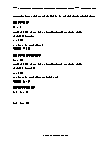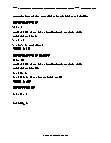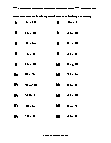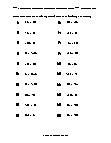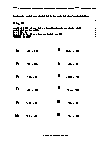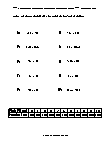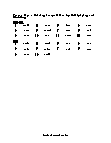Solving Inequalities by Multiplying and Dividing Worksheets
How to Solve Inequalities by Multiplying and Dividing - We all know what equations are in mathematics. Equations are a combination of constant values, variables, arithmetic operations, and an equals-to sign. When the equals-to sign is replaced with a "less than," "less than or equal to," "greater than," or "greater than or equal to sign," we call it an inequality. Solving an inequality is very much similar to solving an equation. When you know how to solve an equation, you will know exactly how to solve an inequality. So, how to solve inequalities by multiplying and dividing? Remember how you solved equations by multiplying and dividing? No? Let's recall it. Consider the following equation: 3x=21. To solve this equation, you divide both sides of the equation by 3; 3x/3 = 21/3, x = 7. Now, consider another example; x/3 = 2. To solve this equation, you multiply both sides of the equation by; x/3 × 3 = 2 × 3, x = 6. Now that we have recalled the solving equations, we can move towards solving inequalities. Consider the following example; 4x ≥ 10/3. To solve this inequality, you have to divide the whole inequality with 4; 4x/4 ≥ 10/(3×4), x = 5/6. The only difference between solving inequality and an equation is, when you multiply an inequality with a negative number, the sign of the inequality changes. If the equation had been; -4x ≤ 10/3, we would have multiplied both sides of the inequality with -1/4. -4x × -1/4 ≥ 10/3× - 1/4. Did you see how the sign changed? Well, this is how you solve an inequality through multiplication and division.
-
Basic Lesson
Demonstrates how to transfer numbers in multiplication and division based equations. We focus on combining like terms and then moving to the free side. Practice problems are provided.
View worksheet -
Intermediate Lesson
Explains how to rewrite equations to solve inequalities. Practice problems are provided.
View worksheet -
Independent Practice 1
Contains 20 Solving Inequalities by Multiplying and Dividing problems. The answers can be found below.
View worksheet -
Independent Practice 2
Features another 20 Solving Inequalities by Multiplying and Dividing problems.
View worksheet -
Homework Worksheet
12 Solving Inequalities by Multiplying and Dividing problems for students to work on at home. Example problems are provided and explained.
View worksheet -
Topic Quiz
10 Solving Inequalities by Multiplying and Dividing problems. A math scoring matrix is included.
View worksheet
Where Does the Word "Algebra" Come From?
The word "algebra" comes from the title of a work on mathematics by an Arab mathematician. Al-Khuwarizmi wrote the piece titled Al-gabr. The first mathematician to use letters to represent unknown quantities was French; his name was Francois Viete.
